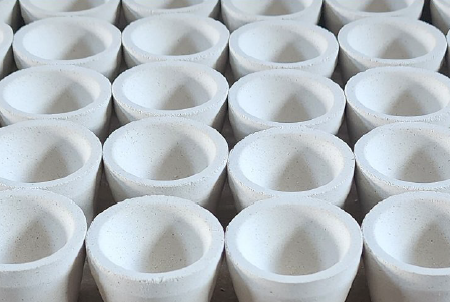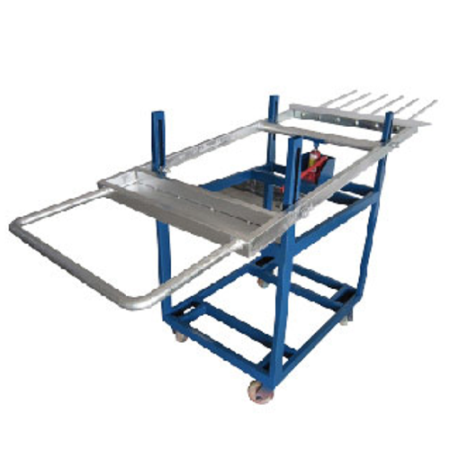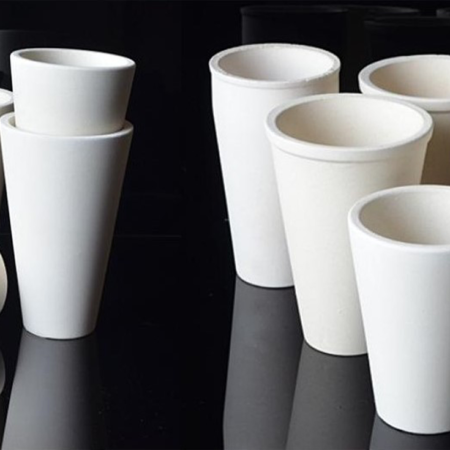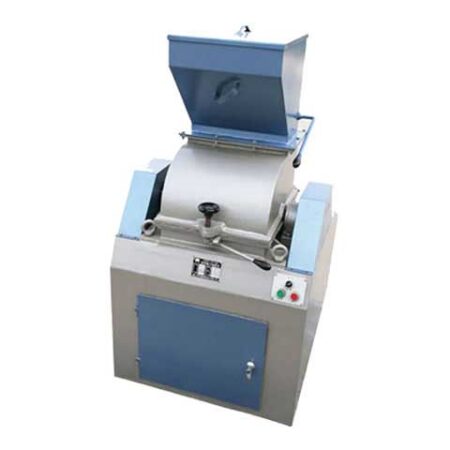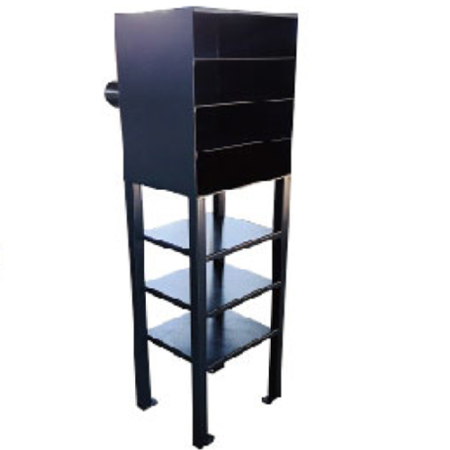Precision at its Finest: Elevate Your Lab Experiments with Global Lab Supplies
Crucible Tumbler
GLS’s crucible tumbler is a new type of forward and reverse rotating mixing equipment. The crucible tumbler is mainly used for batch mixing of fire assay mineral samples and fluxes. The device can mix up to 50 fire assay crucibles at a time. This significantly improves the efficiency of laboratory sample preparation and reduces manual operations. It is one of the necessary equipment for fire assay laboratory.
The lengthy time required for fire assaying of gold, silver and precious metals can often be compensated for by the simultaneous analysis of a large number of samples. A typical fire assay laboratory is usually equipped with several furnaces and cupellation furnaces, each capable of collecting multiple samples. Therefore, GLS’s Multiple Sample Load Forklift, Crucible Tumbler and other equipment have greatly improved the efficiency of laboratory sample preparation and load-and-unload.

Crucible Tumbler
Request a Call Back
Automatic mixer for batch mixing of fire assay fusion sample and flux
• PLC control provides easy operation.
• Compatible with multipour and multiload system.
• Forward and reverse rotation ensures ail batches of samples same homogenized condition.
• Adjustable mixing speed and time offer high efficiency and full protection to assayers.
• Various customization available for different size and quantity of crucible, different voltage and frequency.
UNIQUE ADVANTAGES
Mix up to 50 crucible samples at the same time to save mixing time and improve efficiency.
The decelerating motor drives the rotating flap to make the material rotate back and forth to achieve the purpose of uniform mixing.
Worm gear and worm gear reduction mechanism have the characteristics of fast speed and short mixing time
Man-machine interaction can set running time and rotation speed
Various types of crucibles such as 40G, 50G, 55G, etc. can be placed.
Cooperate with GLS crucible electric/manual pot loader, the work efficiency is higher and the operation is more convenient.
TECHNICAL PARAMETERS
Voltage: 380V three-phase five-wire system.
Frequency: 50Hz.
Input rated power: 2.5KW.
Input rated current: 4.5A.
Dimensions: 1695x1130x1235 mm.
Sensor: metal proximity sensor, electromagnetic sensor.
Pneumatically control the opening and closing of the door. Suggested air pressure: 0.4-0.5Mpa.
Control method: touch panel, Man-machine interaction.
Matching 40G, 50G, 55G crucible
Operating speed: maximum 60 rpm
Running time: Maximum 120 minutes

Related Products
Zirconium exhibits superb corrosion resistance in most organic and inorganic acids, salt solutions, strong alkalis and a few molten salts.
The passive oxide film (corrosion barrier) is stable in both reducing and oxidizing conditions. Zirconium is excellent in both acid and base solutions.
The temperature limit for use in air is
about 450˚C to 500˚C.
Pulverizing bowl: also called pulverising mill grinding bowl, pulverizer mill bowl. It is a grinder that grinds coarse material into fine powder. When working, put the grinding bowl into the laboratory sample pulverizer or vibration grinder card slot. The motor drives the grinding bowl to eccentrically vibrate. After 2-6 minutes of work, the material can reach 80-300 mesh for testing.
Cupel is a shallow, porous crucible with approximately 96% magnesia. It is especially used to separate gold, silver, and precious metals from lead buckles in the process of Pb-Fire assay. By using high-quality raw materials and scientific formulas, GLS’s fire assay magnesia cupel has a smooth surface, high mechanical strength, and will not crack and pit during high-temperature cupellation.
Zirconium is our most effective crucible material for fusions using sodium carbonate or sodium peroxide. It is an excellent low-cost replacement for platinum. And, based on an average of 100 fusions per crucible, it is more cost effective than less expensive porcelain or steel crucibles.
Other advantages of zirconium are its complete resistance to the action of most solvents of all concentrations such as nitric, hydrochloric, sulfuric and perchloric acids.
This allows the fusions to be dissolved out of the crucible completely with little or no contamination of the sample. Alkaline solvents such as ammonium hydroxide, acetate sulfide, carbonate and (Na, K) hydroxide, sulfide, carbonate and cyanide are also without effect.
Gold Smelting Crucibles As Name of Fire Assay Crucibles,have a higher than normal resistency to cracking under fire assay conditions. Our crucibles and refractory products are used in laboratories throughout international marketplace. Our Crucibles can be used for 3-5 times. We have a variety of shapes and sizes available to cater to specifications required.
● Suit to both stalk type fiber material and mineral type granular material.
● Welded steel crushing cavity can avoid easy crack and material holdup problems.
● Fully sealed cabinet design offers safe and dust free operation.
● Full width hammer heads crush materials in full section and avoid problems of blocking working cavity and sample holdup.
● Crushing large moisture samples without moisture lose and with uniform output and high efficiency.
● Low noise and easy moving with wheels.
The Fire assay fusion chamber furnace is a kind of equipment used to melt crushed ore samples (containing precious metal) with mixed fluxes (powdered lead oxide) in a refractory clay crucible.
GLS supplies various types of laboratory fusion furnaces for fire assay. The industrial-sized, large-capacity furnace chamber can be loaded with multiple crucibles, which significantly improves the efficiency of laboratory smelting and testing of ore samples and reduces the frequency of manual operations.







